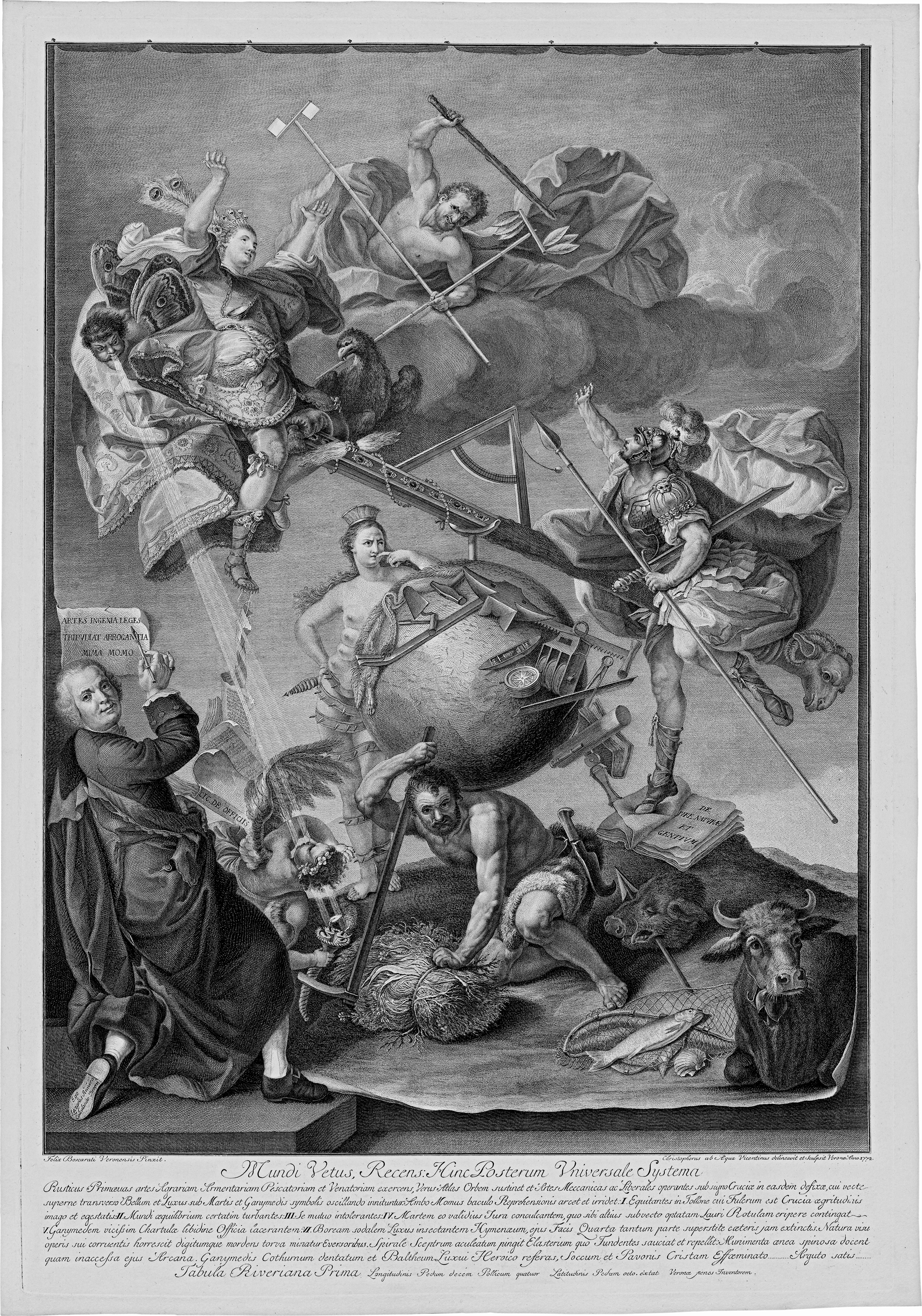Loading the page ...
Cristoforo Dall’Acqua
(1734–1787, Vicenza)
Four Allegorical and Satirical Images of the Way of the World: Mundi vetus, recens hinc posterum universale systema; Asylum morale; Satyra Vestalis; Vita mundi et oeconomia. Four etchings and burin. Each approx. 70 x 48 cm. 1772–76. Meyer, Allgemeines Künstler-Lexikon I, 33–36.
Cristoforo Dall’Acqua from Vicenza is considered the city’s principal 18th century engraver. There is documentary evidence that he cooperated with the Remondinis, influential publishers of engravings from Bassano, as of 1757 and subsequently worked for Joseph Wagner’s renowned publishing house in Venice. The rare series of allegories on offer here is without doubt Dall’Acqua’s masterpiece. Known as the Tabula Riveriana, it comprises four folio-format reproductive engravings after paintings by the Veronese artist, Felice Boscarati (1721–1807), which the latter made in 1773 for Lazzaro Riviera, a freemason, scholar and doctor resident in Verona. Boscarati’s ensemble of paintings is designed to give visual expression to Riviera’s philosophical and pedagogical theories. To enable the public at large to appreciate the individual details of his highly complex pictorial programme Riviera published an explanatory brochure in 1773 entitled La educazione virile, a little philosophical treatise illustrated by Dall’Acqua’s reproductive engravings.
The outstanding feature of this elaborate and intriguing series is its extraordinarily learned and idiosyncratic iconography, which is devoted to the order of the universe. It is no exaggeration to assert that it is a real treat for iconologists. The unusually intricate iconographic programme combines elements of Masonic symbolism with highly original and occasionally occult imagery. A detailed analysis would exceed the limited scope of this catalogue, so we must content ourselves with a brief look at a few aspects of the extremely unconventional iconography. What is immediately striking is the complete lack of any Christian connotations; the individual scenes illustrating the laws of the universe are imbued with a markedly profane, educational spirit. On the title page homo rusticus bears the globe, which in turn supports a see-saw on which are balanced Mars, the god of war, and Ganymede as the personification of vanitas. Boreas, the god of the wind, attempts to blow out the torch held aloft by Hymen, the god of marriage. Portrayed in full length in the right foreground is Lazzaro Riviera, the commissioner and auctor intellectualis of the encyclopaedic and moralistic pictorial programme. In the second image a diaphanous, female allegorical figure, presumably the personification of imagination, floats away from the crowds who have gathered, while Heraclitus weeps and Democritus follows the events with a smile on his lips. Philosophy is represented by an elegantly clad young man sat in relaxed pose smoking a pipe with an attitude of complete equanimity. The third genre picture Satyra Vestalis warns of the dangers of hypocrisy, while the Roman playwright Plautus turns away in disgust from the bizarre goings-on. The final image in the series is devoted to the utopia of a harmonious world order supervised by Aristotle.
See Xenia Riemann, Ein rätselhafter Allegoriezyklus Felice Boscaratis nach einem Bildprogramm von Lazzaro Riviera: Enzyklopädismus, Aufklärung und Freimaurertum im Verona des 18. Jahrhunderts, Weimar 2002. Very fine, harmonious impressions of consistent printing quality, with the full margins. Minor ageing, otherwise in excellent condition.
Contact us for further information